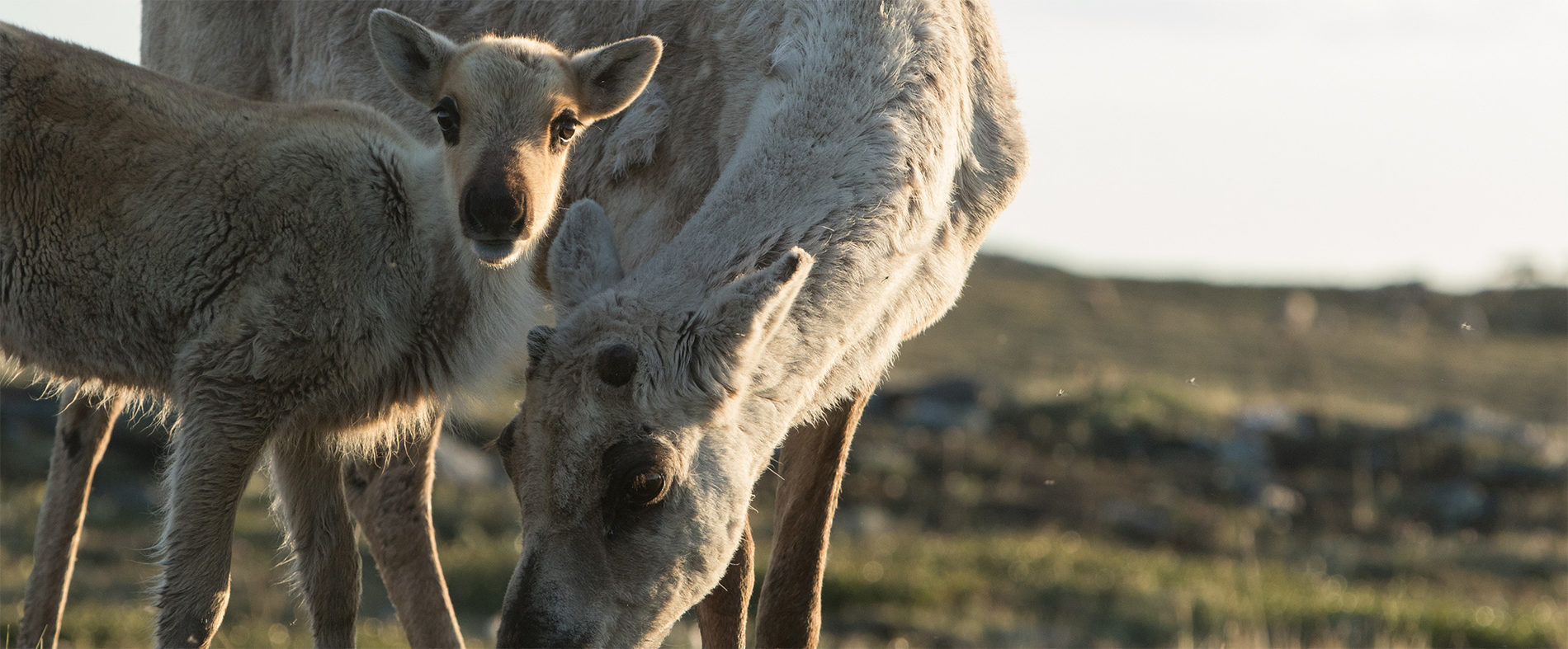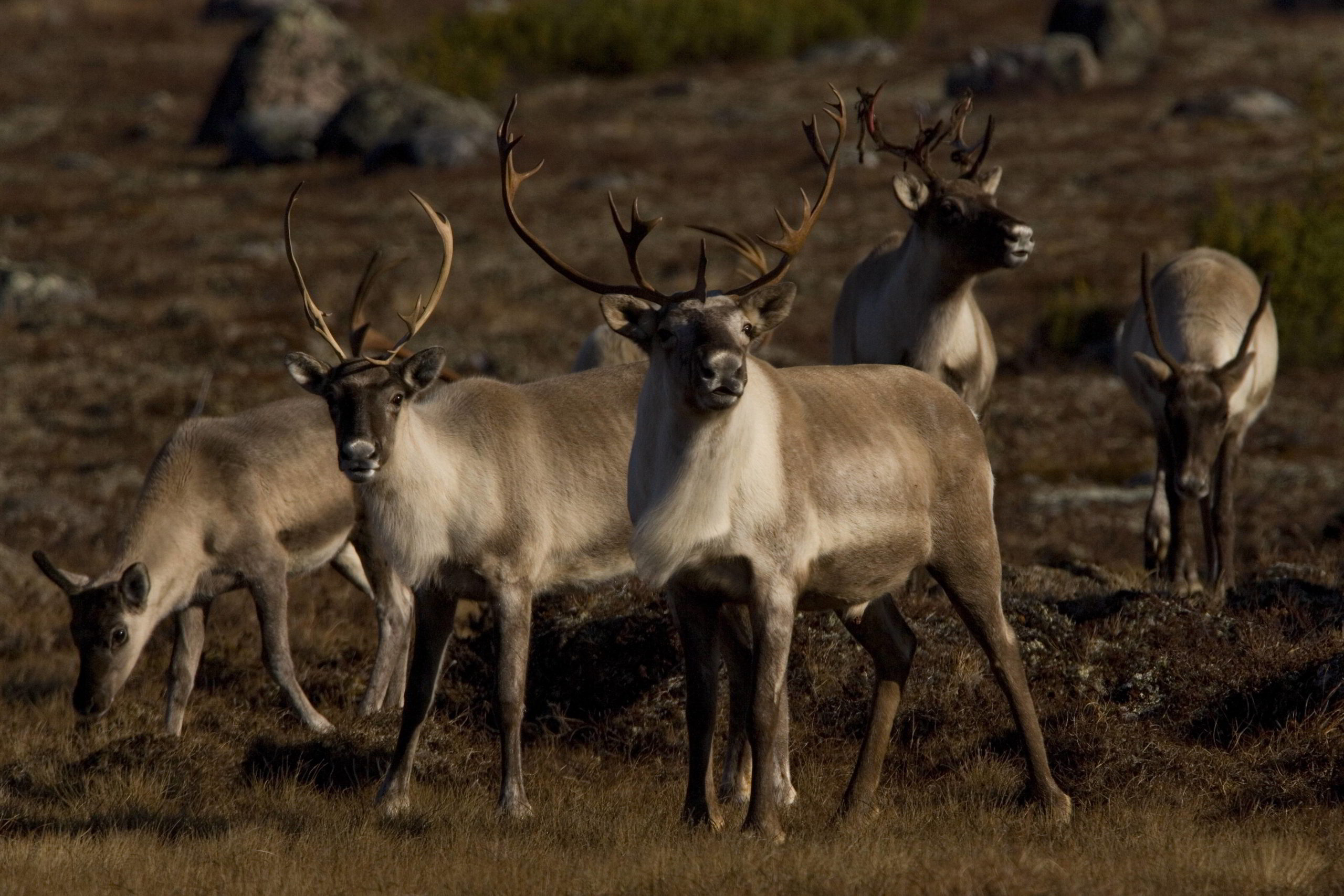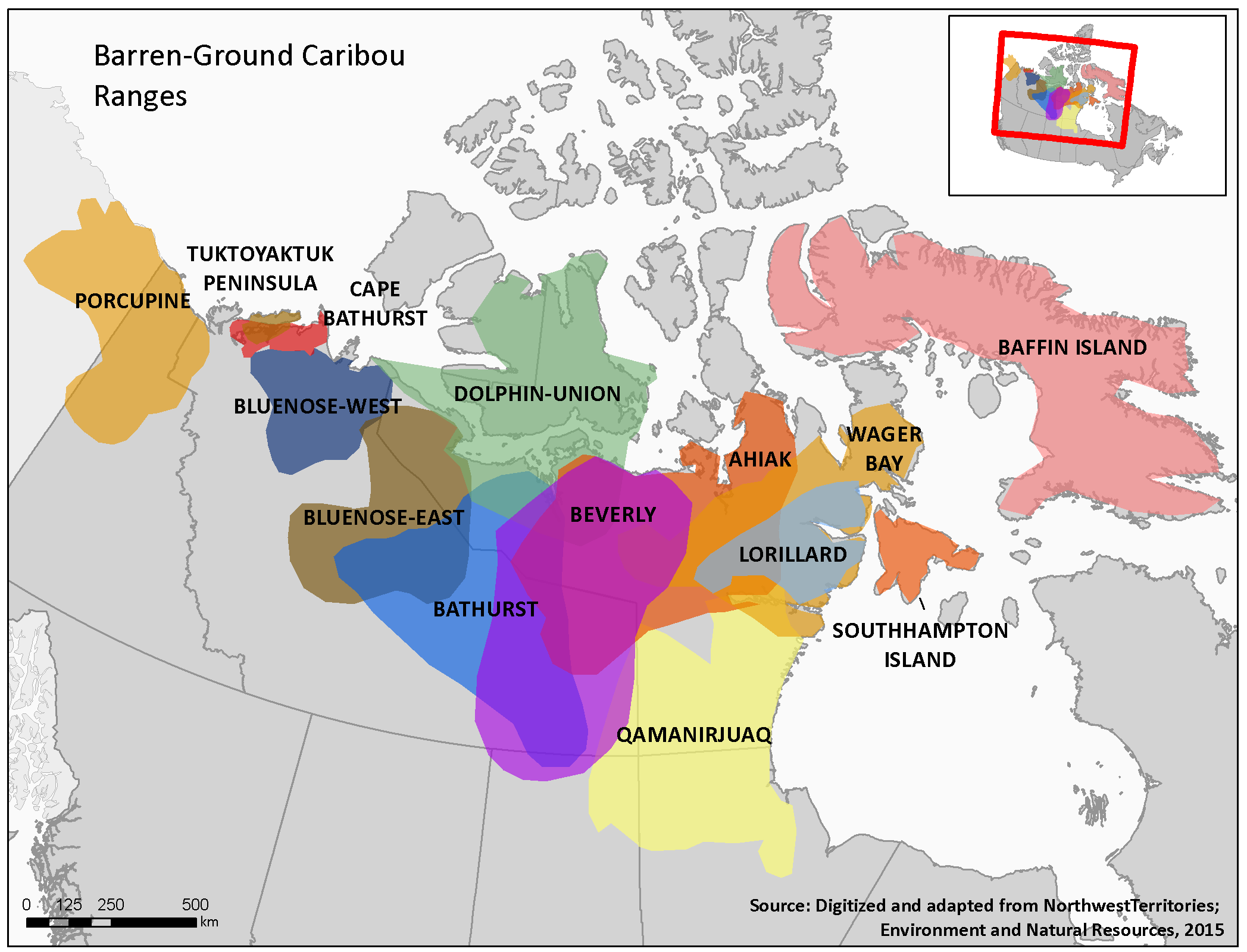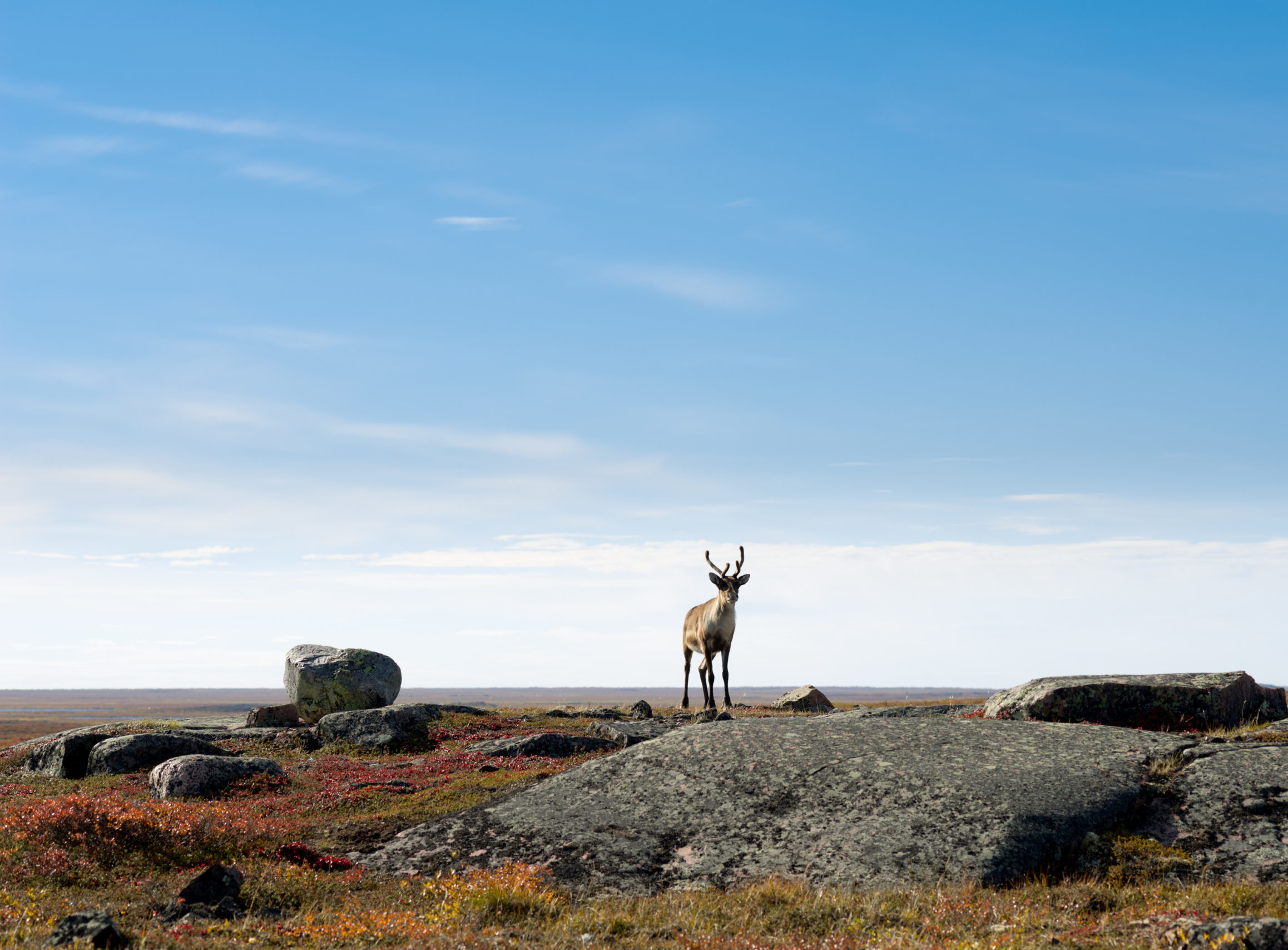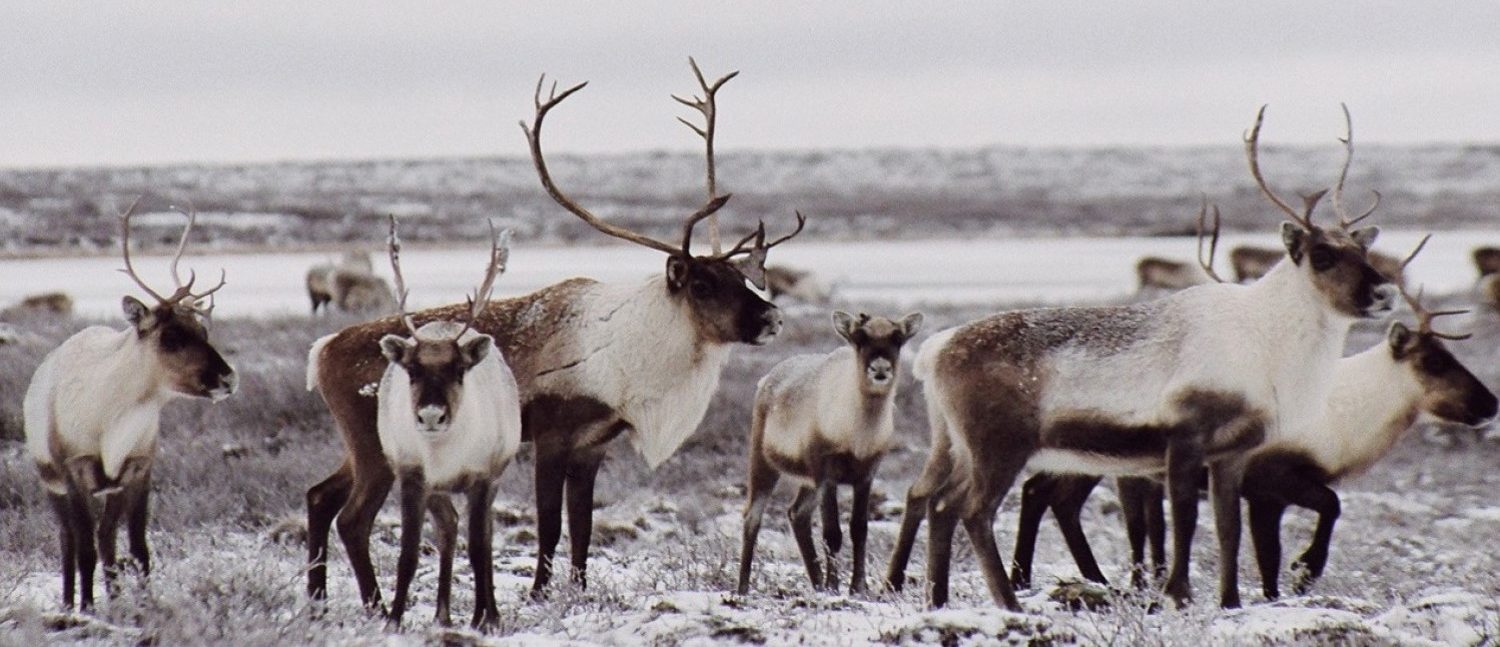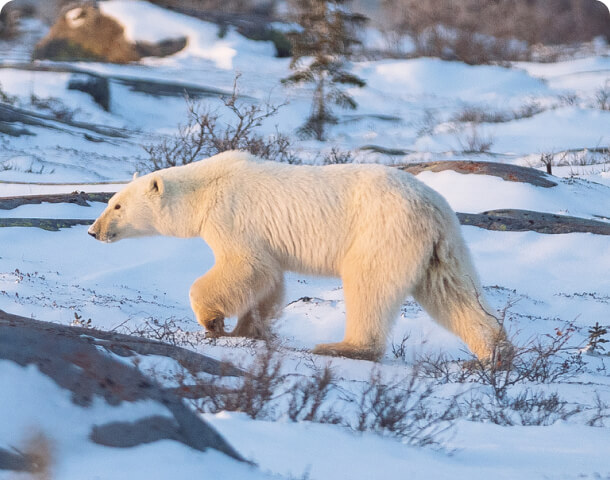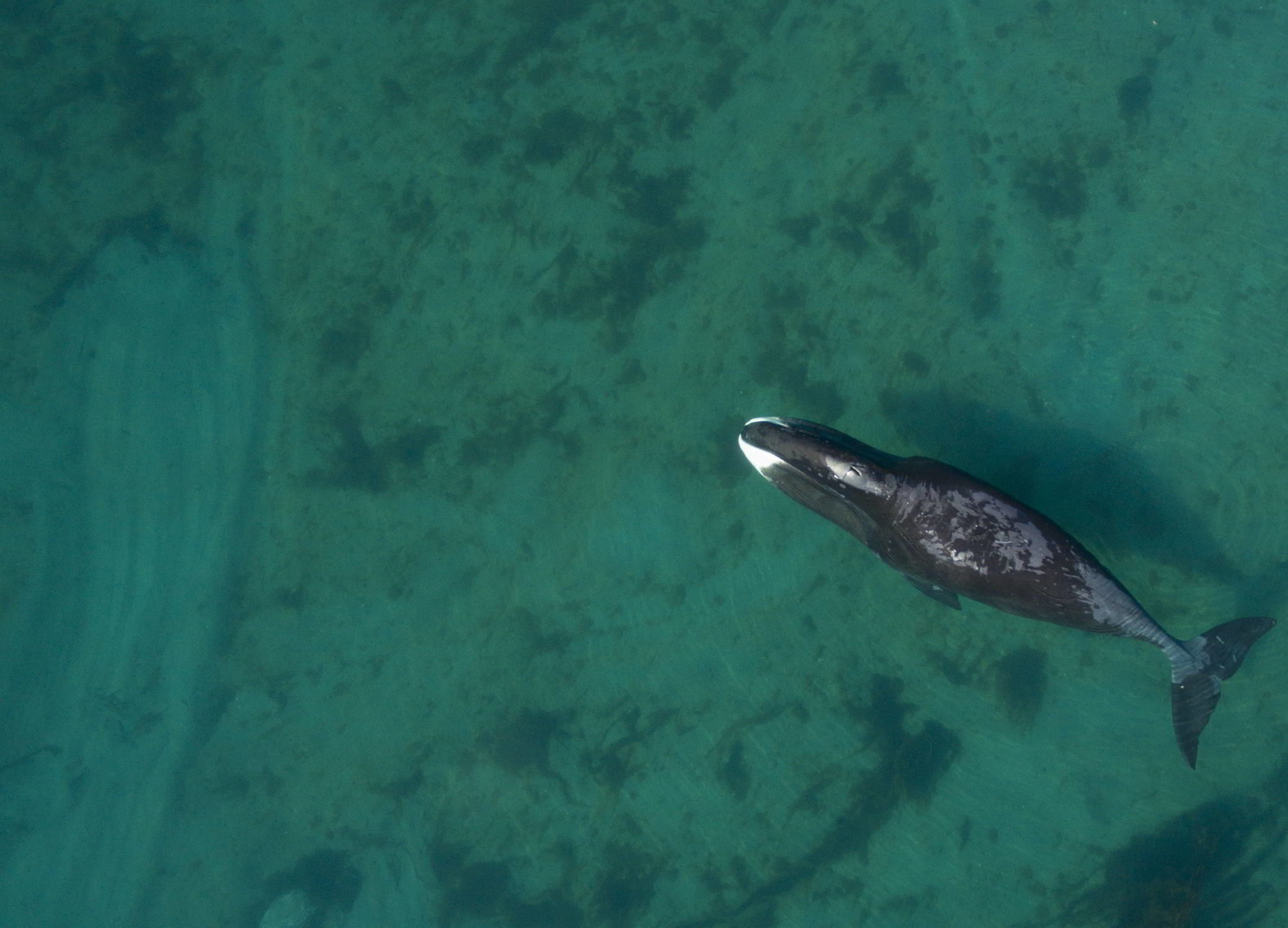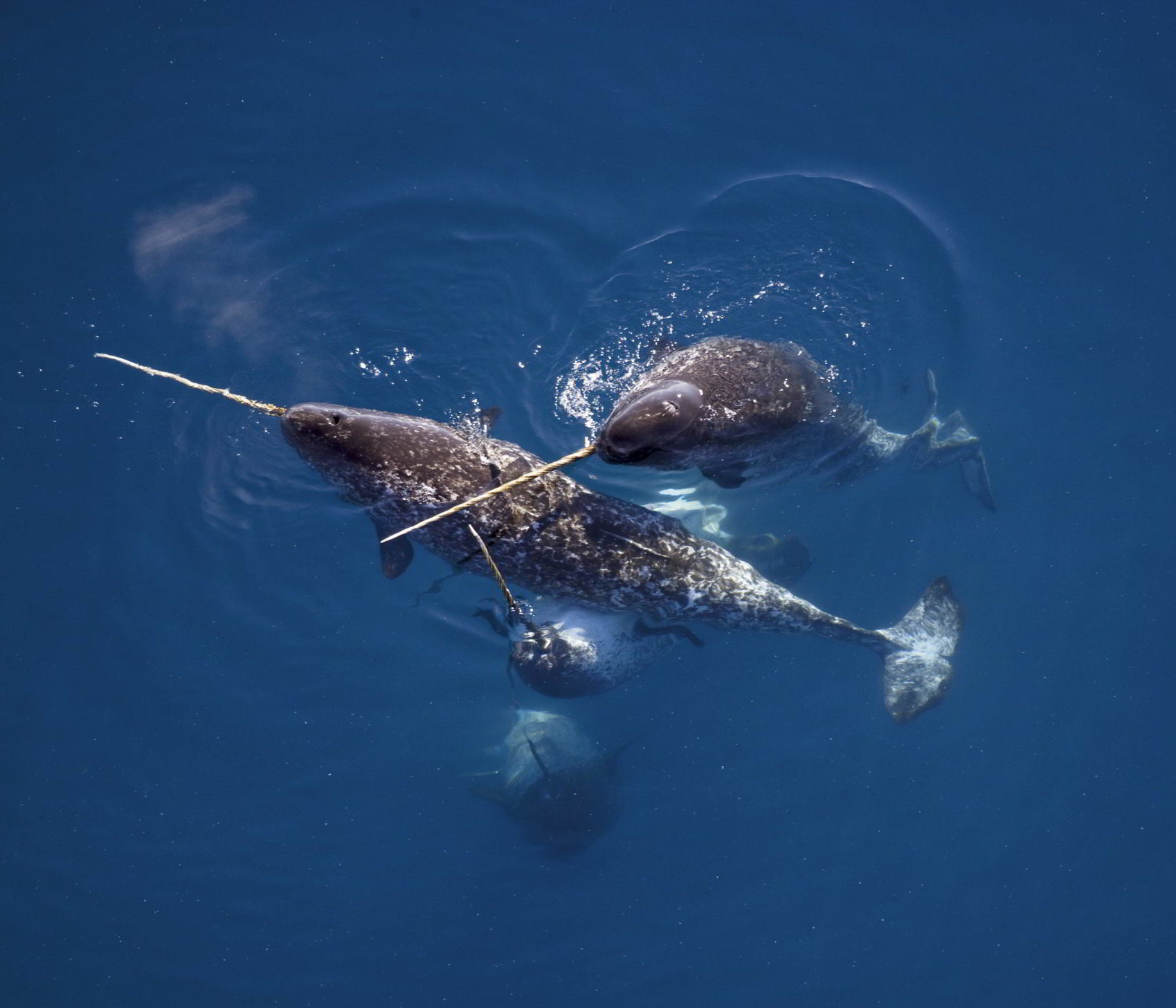Caribou populations fluctuate dramatically under natural conditions. When faced with external threats, their numbers can drop to dangerous levels and may fail to recover from natural population lows. There are multiple cumulative environmental and human-caused stressors that are contributing to barren-ground caribou decline.
Climate change is altering the habitat of Arctic caribou, increasing the presence of biting flies in the summer, and creating irregular icing events in the winter that prevent caribou from accessing food.
Most Arctic caribou are migratory, and their habitat crosses territorial and provincial borders. As the climate changes, and migration patterns shift, it will be increasingly important for governments to implement effective land-use planning to support wildlife and ecosystems.
Increased mining exploration and development across their ranges also puts caribou herds under pressure, with the most significant risk of habitat loss and disturbance occurring when industrial development occurs on their calving grounds.

